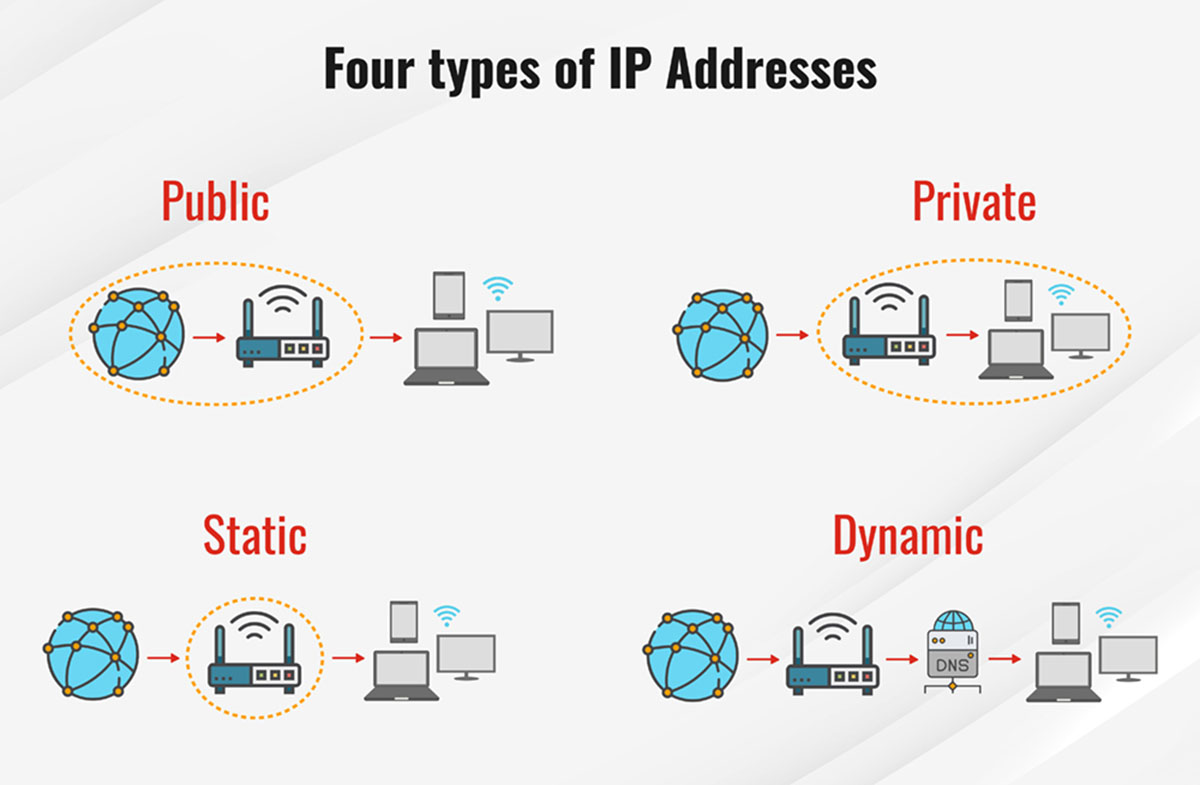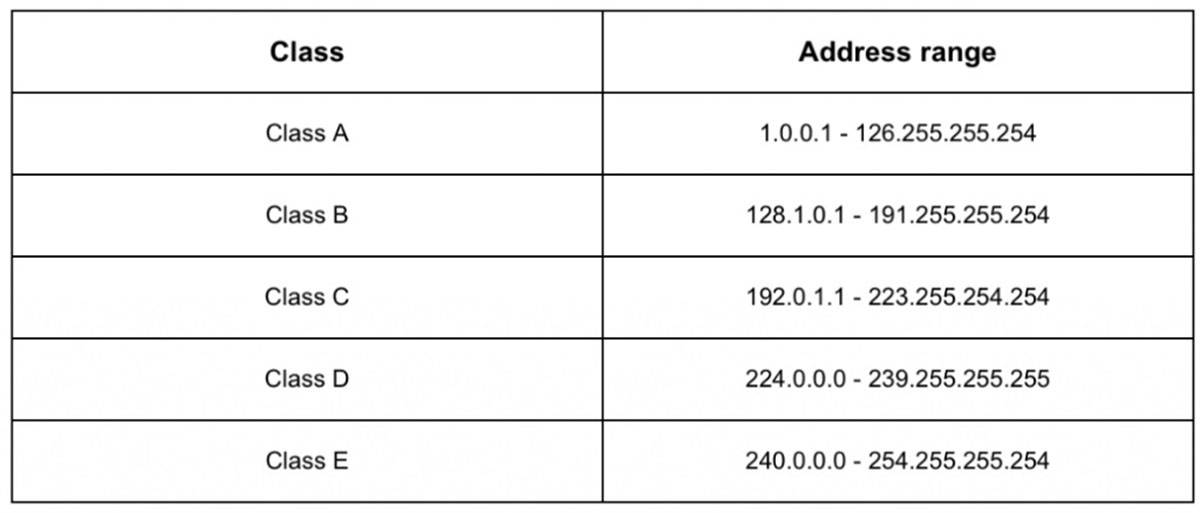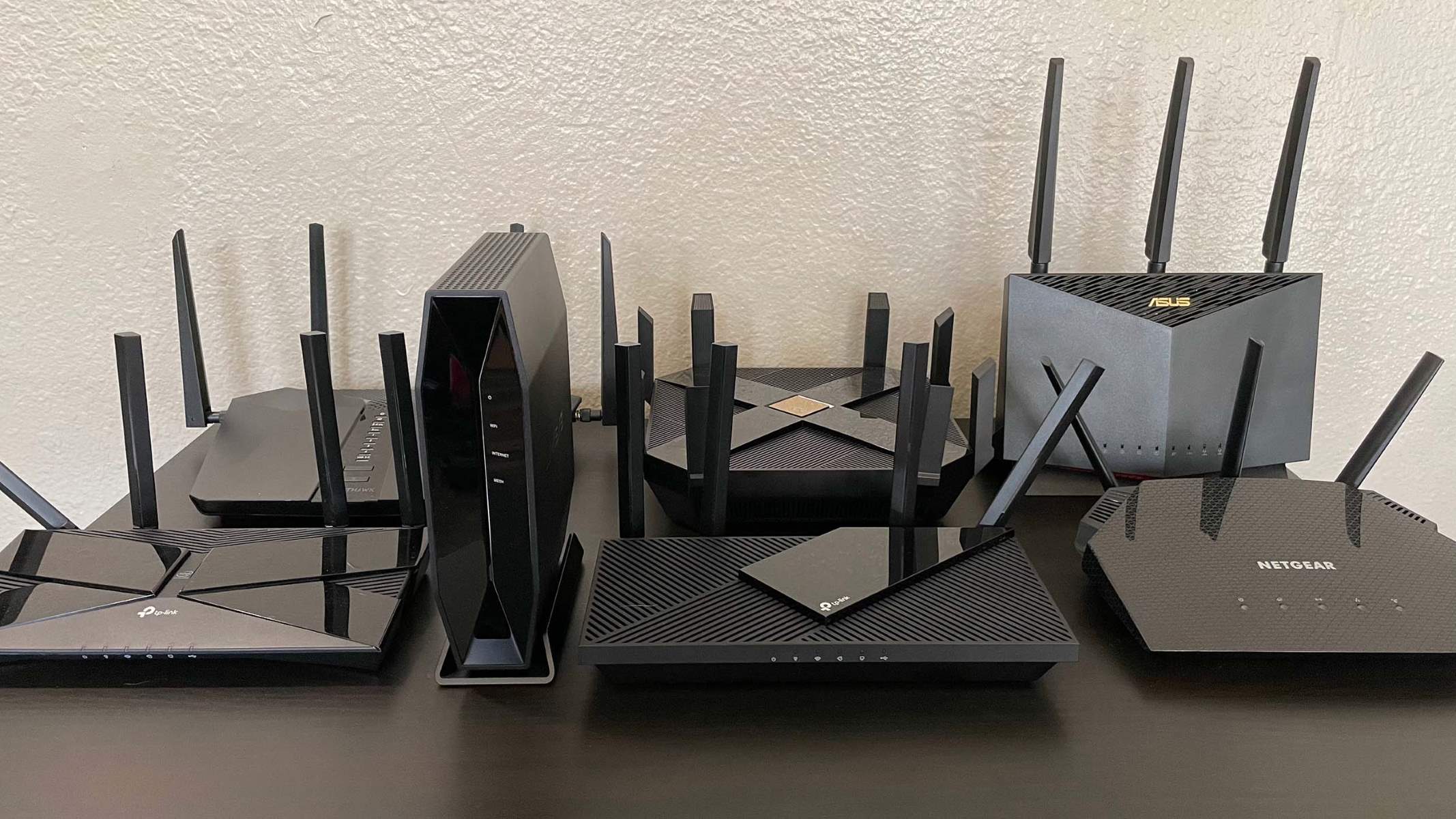Introduction
Welcome to the world of IP addresses! If you’ve ever wondered how computers communicate with each other on a network, you’ve come to the right place. In this article, we’re going to dive into the world of IP addresses, specifically focusing on private IP addresses.
An IP address, which stands for Internet Protocol address, is a unique numerical identifier assigned to each device that is connected to a computer network. It serves as a means of identifying and locating devices on a network, enabling them to communicate with each other.
Now, you might be thinking, what exactly is the difference between a private IP address and a public IP address? That’s a great question, and we’ll be exploring that in more detail later.
Understanding private IP addresses is crucial for both network administrators and everyday internet users. These addresses play a vital role in facilitating communication within local networks and ensuring the security of the connected devices.
In this article, we will break down the concept of private IP addresses, discuss their advantages, and show you how to check your own private IP address on different operating systems.
So, whether you’re a tech enthusiast or someone curious about the inner workings of the internet, come along as we unravel the mysteries of private IP addresses!
Understanding IP Addresses
Before we delve into the specifics of private IP addresses, it’s important to have a basic understanding of IP addresses in general.
An IP address is a unique identifier assigned to each device connected to a network. It consists of a series of numbers separated by periods, such as 192.168.0.1. This numerical address acts as the device’s “home address” on the network, allowing it to send and receive data.
IP addresses are categorized into two main types: IPv4 and IPv6. IPv4 (Internet Protocol Version 4) is the most common and widely used form of IP address. It consists of a 32-bit address, which limits the number of unique addresses available. IPv6 (Internet Protocol Version 6) is a newer version that uses a 128-bit address, enabling a significantly larger number of unique addresses.
The IP address serves as a crucial part of the communication process on the internet. When you enter a website’s URL in your web browser, your device uses the IP address to locate the server hosting that website and establish a connection.
IP addresses are divided into two broad categories: public IP addresses and private IP addresses. These two types play distinct roles in the network infrastructure.
Now that we have a general understanding of IP addresses, let’s take a closer look at the differences between public and private IP addresses, and why private IP addresses are essential for local networks and the devices connected to them.
What is an IP Address?
An IP address, or Internet Protocol address, is a unique numerical identifier assigned to each device connected to a network. It serves as a means of identifying and locating devices on a network, allowing them to communicate with each other.
An IP address consists of a series of numbers separated by periods, such as 192.168.0.1. This address serves as the “home address” for a device, enabling it to send and receive data over the internet or within a local network.
IP addresses are essential for the functioning of the internet. When you type a website’s URL into your web browser, your device uses the IP address associated with that website to locate its server and establish a connection. Similarly, when you send an email or stream a video, your IP address is involved in the transmission of data.
There are two main types of IP addresses: IPv4 and IPv6. IPv4 is the older and more commonly used version, consisting of a 32-bit address. However, the limited number of IPv4 addresses prompted the development of IPv6, which uses a 128-bit address to accommodate the growing number of devices connected to the internet.
IP addresses can be dynamic or static. Dynamic IP addresses are assigned to devices temporarily by the network’s DHCP (Dynamic Host Configuration Protocol) server and can change over time. On the other hand, static IP addresses are manually assigned and remain constant, which is useful for devices that require consistent connectivity and easier network management.
Public and private IP addresses are the two main classifications of IP addresses. Public IP addresses are unique addresses assigned by Internet Service Providers (ISPs) to devices that connect directly to the internet. They allow devices to be identified and accessed from anywhere on the internet. In contrast, private IP addresses are used within local networks and are not directly accessible from the internet.
Understanding the concept of IP addresses is crucial for network administrators, tech enthusiasts, and everyday internet users. It allows for better management of network resources, improved security, and troubleshooting connectivity issues. Now that we have grasp the basics of IP addresses, let’s turn our focus to private IP addresses and explore their importance in local networks.
Types of IP Addresses
IP addresses can be classified into two main types: public IP addresses and private IP addresses. These types play different roles in the network infrastructure and serve distinct purposes.
1. Public IP Addresses:
A public IP address is a globally unique identifier assigned to a device that is directly connected to the internet. It is assigned by an Internet Service Provider (ISP) and serves as the device’s public face on the internet. Public IP addresses allow devices to be identified, accessed, and communicate with other devices or servers across the internet.
Public IP addresses are essential for devices that provide services over the internet, such as web servers, email servers, and online gaming servers. When you access a website, send an email, or connect to an online gaming server, your device uses the public IP address associated with that server to establish a connection.
2. Private IP Addresses:
Unlike public IP addresses, private IP addresses are used within local networks. These addresses are not directly accessible from the internet and are meant for internal communication within a private network.
Private IP addresses provide a way for devices on a local network to communicate with each other without the need for a globally unique identifier. They help to ensure the security and privacy of devices within the local network by keeping them hidden from the public internet.
Private IP addresses are commonly used in home networks, businesses, and institutions to enable local network connectivity. They allow devices like computers, printers, and IoT devices to communicate and share resources within the network.
Private IP addresses are typically assigned using a range designated by certain IP address blocks reserved for private use. The most common private IP address ranges for IPv4 are:
- 10.0.0.0 to 10.255.255.255 (10.0.0.0/8)
- 172.16.0.0 to 172.31.255.255 (172.16.0.0/12)
- 192.168.0.0 to 192.168.255.255 (192.168.0.0/16)
It’s worth noting that there is a limited number of public IP addresses available, and the use of private IP addresses helps conserve these public addresses.
Now that we have a clear understanding of the different types of IP addresses, let’s dive deeper into private IP addresses and explore their advantages and importance in local networks.
Private IP Address vs Public IP Address
In the world of IP addresses, there are two main categories: private IP addresses and public IP addresses. Understanding the difference between these two types is essential for managing networks and ensuring secure communication.
Private IP Address:
A private IP address is an address assigned to a device within a local network. These addresses are not directly accessible from the internet and are meant for internal communication within the network. Private IP addresses allow devices to communicate with each other within the network without exposing them to the public internet.
Private IP addresses are commonly used in home networks, businesses, and institutions to create local network environments. By using private IP addresses, devices can securely interact with each other, share resources, and maintain privacy within the local network.
Private IP addresses are typically assigned from specific reserved IP address blocks, such as the ranges 10.0.0.0 to 10.255.255.255, 172.16.0.0 to 172.31.255.255, and 192.168.0.0 to 192.168.255.255. These ranges are designated for private use and are not routable on the public internet.
Public IP Address:
A public IP address, on the other hand, is a globally unique address assigned to a device that is directly connected to the internet. Public IP addresses are obtained from Internet Service Providers (ISPs) and serve as the device’s public-facing address, allowing it to be identified and accessed from anywhere on the internet.
When you access a website, send an email, or connect to a server on the internet, your device uses its public IP address to establish the connection. Public IP addresses are essential for devices that provide services over the internet, such as web servers, email servers, and gaming servers.
Differences and Use Cases:
The main difference between private and public IP addresses lies in their accessibility and purpose. Private IP addresses are used for internal network communication, while public IP addresses are used for external communication over the internet.
Private IP addresses offer several advantages, including enhanced security and network privacy. By keeping devices hidden behind a private IP address, the risk of unauthorized access and external threats is minimized.
Public IP addresses, on the other hand, enable devices to be accessible from the internet, allowing for remote access, hosting services, and public communication. They are necessary for devices that need to provide services or be reached from outside the local network.
In summary, private IP addresses are used for internal network communication within a local network, while public IP addresses are used for external communication with devices and servers over the internet. Understanding the distinction between these two types is crucial for effective network management and maintaining the security of network-connected devices.
What is a Private IP Address?
A private IP address is an address assigned to a device within a local network. Unlike public IP addresses, private IP addresses are not directly accessible from the internet and are designed for internal communication within the network.
Private IP addresses play a crucial role in creating local network environments such as home networks, businesses, and institutions. They allow devices within the network to communicate with each other, share resources, and maintain network privacy.
Private IP addresses are assigned from specific reserved IP address blocks. The most commonly used private IP address ranges for IPv4 are:
- 10.0.0.0 to 10.255.255.255 (10.0.0.0/8)
- 172.16.0.0 to 172.31.255.255 (172.16.0.0/12)
- 192.168.0.0 to 192.168.255.255 (192.168.0.0/16)
These ranges are designated for private use and are not routable on the public internet. This means that devices with private IP addresses can communicate with each other within the same local network, but they cannot be accessed directly from outside the network.
The use of private IP addresses provides several advantages:
1. Enhanced Security: By keeping devices within a private IP address range, they are shielded from direct exposure to the public internet. This helps prevent unauthorized access and protects against external threats and malicious activities.
2. Network Privacy: Since private IP addresses are not globally unique, devices within a local network can use the same IP address ranges. This allows for privacy and avoids any conflicts when connecting multiple devices to the network.
3. Network Address Translation (NAT): Private IP addresses are commonly used in conjunction with Network Address Translation. NAT is a technique used to translate private IP addresses into public IP addresses, allowing devices within a local network to access the internet. This helps conserve public IP addresses and enables multiple devices to share a single public IP address.
It’s important to note that private IP addresses alone do not provide direct access to the internet. In order for devices within a local network to connect to the internet, they must use a mechanism such as NAT or use a network gateway device, such as a router, that provides routing and translation services.
In summary, a private IP address is a non-routable address used for internal communication within a local network. It enhances network security, provides privacy, and offers address conservation benefits. Understanding private IP addresses is crucial for network administrators and individuals managing local networks.
Advantages of Using a Private IP Address
Using a private IP address within a local network offers several advantages that contribute to enhanced security, efficient network management, and better utilization of IP address resources. Let’s explore the key benefits of utilizing private IP addresses:
1. Enhanced Network Security:
One of the major advantages of using a private IP address is the enhanced network security it provides. By keeping devices within a private IP address range, you reduce the risk of unauthorized access from the external internet. It acts as a barrier that shields your devices from direct exposure to potential threats, helping to protect your network infrastructure and data.
2. Address Conservation:
With the ever-increasing number of devices connected to the internet, conserving available public IP addresses has become crucial. By using private IP addresses, you can create local networks that operate independently and avoid the need for each device to have a unique public IP address. This helps conserve public IP addresses for devices that require direct access from the internet, such as servers or routers.
3. Simplified Network Management:
Private IP addresses simplify network management by allowing multiple devices to share a single public IP address. This is achieved through a technique called Network Address Translation (NAT). NAT enables devices within a local network to communicate with the internet using the shared public IP address, which reduces the complexity of managing and configuring individual public IP addresses for each device.
4. Privacy and Versatility:
Private IP addresses offer privacy within a local network. Devices within the network can communicate and share resources without the need for external parties to see or access them. This makes private IP addresses ideal for home networks, businesses, and institutions where maintaining privacy and restricting outside access is necessary.
5. Improved Network Performance:
Using private IP addresses can improve network performance by reducing the amount of traffic on the public internet. Since devices within a local network communicate directly, the need for data to travel through external networks is minimized. This can result in faster speeds, lower latency, and more efficient data transmission within the local network.
Overall, the advantages of using private IP addresses contribute to a more secure, scalable, and efficient network infrastructure. By utilizing private IP addresses, businesses and individuals can establish secluded and secure local networks while conserving public IP address resources for devices that require direct internet access.
How to Check Your Private IP Address
Knowing your private IP address is essential for network troubleshooting, setting up network devices, or accessing resources within your local network. Here are various methods to check your private IP address on different operating systems:
1. Finding Your Private IP Address on Windows:
– On Windows 10 or 8: Go to the Start menu, search for “Command Prompt,” and open it. Type “ipconfig” and press Enter. Look for the “IPv4 Address” under the network adapter you are currently connected to.
– On Windows 7 or earlier: Click on the Start menu, open the Control Panel, select “Network and Internet,” then “Network and Sharing Center.” Click on the active network connection, and in the new window, click “Details.” Look for the “IPv4 Address” displayed.
2. Finding Your Private IP Address on Mac OS:
– Open the “System Preferences” from the Apple menu and click on “Network.” Select the currently active network connection from the list on the left. You will find the private IP address displayed on the right, labeled as “IP Address.”
3. Finding Your Private IP Address on Linux:
– Open the Terminal and enter the command “ifconfig” or “ip addr show” to display network interface information. Look for the IP address displayed next to the network adapter you are using.
– Alternatively, you can use the command “hostname -I” to quickly obtain your private IP address on Linux.
4. Finding Your Private IP Address on Mobile Devices:
– On Android: Go to “Settings,” tap on “Wi-Fi”. Select your current Wi-Fi network, and the private IP address will be listed under “IP address” or “Gateway.”
– On iOS (iPhone or iPad): Open the “Settings” app, select “Wi-Fi,” and tap on the connected Wi-Fi network. The private IP address will be listed under “IP Address.”
Note: The method of checking your private IP address may vary depending on the operating system version and device configuration. If these methods don’t work, you can also consider using third-party network scanning tools or checking your router’s settings to find the IP address assigned to your device.
By following the steps outlined above on your respective operating system, you can easily check your private IP address. This will empower you to troubleshoot network issues, configure network devices, and access resources within your local network more effectively.
Finding Your Private IP Address on Windows
Checking your private IP address on Windows is a simple process that can be done through the Command Prompt. Here’s how you can find your private IP address on different versions of Windows:
For Windows 10 or 8:
- Click on the Start menu and search for “Command Prompt”.
- Open the Command Prompt application.
- Type “ipconfig” and press Enter.
- Look for the “IPv4 Address” under the network adapter you are currently connected to.
This will display your private IP address on the network you are connected to.
For Windows 7 or earlier:
- Click on the Start menu.
- Open the Control Panel.
- Select “Network and Internet.”
- Select “Network and Sharing Center.”
- Click on the active network connection displayed in the “View your active networks” section.
- In the new window that opens, click on “Details.”
- Look for the “IPv4 Address” displayed. This will be your private IP address.
It’s important to note that the name of the network adapter may differ depending on your system configuration.
By following these steps, you will be able to locate your private IP address on Windows, enabling you to troubleshoot connection issues, configure network settings, or access resources within your local network.
Finding Your Private IP Address on Mac OS
If you are using a Mac, you can easily find your private IP address through the system preferences. Here’s how you can do it:
- Open the “System Preferences” from the Apple menu.
- Click on the “Network” icon.
- Select the currently active network connection from the list on the left.
- You will find your private IP address displayed on the right side, labeled as “IP Address.”
The private IP address listed is specific to the network interface you are connected to. If your Mac has both Wi-Fi and Ethernet connections, ensure that you select the active network connection.
Alternatively, you can also use the Terminal application to find your private IP address on Mac OS. Here’s how:
- Open the “Terminal” application (you can find it in the Utilities folder within the Applications folder).
- Type the command “ifconfig” or “ip addr show” and press Enter.
- You will see a list of network interface information. Look for the IP address displayed next to the network adapter you are currently using. It will be labeled as “inet” or “inet addr.”
Keep in mind that the Terminal method provides more detailed network information, including additional network interfaces and their respective IP addresses.
By following either of these methods on your Mac, you will be able to locate your private IP address. This information can be useful for various purposes, such as troubleshooting network issues, setting up network devices, or accessing resources within your local network.
Finding Your Private IP Address on Linux
Checking your private IP address on a Linux system can be done through the Terminal application. Here are a couple of methods you can use to find your private IP address:
Method 1: Using the ifconfig Command
- Open the Terminal application.
- Type the command “ifconfig” and press Enter.
- You will see a list of network interfaces and their respective configurations.
- Look for the IP address displayed next to the network adapter you are currently using. It will be labeled as “inet” or “inet addr.”
Using the ifconfig command will provide you with detailed network interface information, including the private IP address associated with each interface.
Method 2: Using the ip addr show Command
- Open the Terminal application.
- Type the command “ip addr show” and press Enter.
- You will see a list of network interfaces and their respective configurations.
- Look for the IP address displayed next to the network adapter you are currently using.
Using the ip addr show command will provide you with a similar output to ifconfig, displaying the network interface details and the associated private IP address.
By using either of these commands in the Terminal, you will be able to locate your private IP address on your Linux system. This information can be helpful for various tasks, such as network troubleshooting, configuring network settings, or accessing resources within your local network.
Conclusion
In conclusion, understanding private IP addresses is essential for managing local networks and ensuring secure and efficient communication between devices. Private IP addresses are designated for internal network use and offer several advantages over public IP addresses.
We explored the concept of IP addresses, which are numerical identifiers assigned to devices on a network. IP addresses are categorized into two main types: public and private. Public IP addresses are globally unique and used for communication over the internet, while private IP addresses are used within local networks.
We discussed the advantages of using private IP addresses, such as enhanced network security, address conservation, simplified network management, privacy, and improved network performance. Private IP addresses provide a secure and controlled environment for devices to communicate and share resources within a local network.
Additionally, we provided step-by-step instructions on how to find private IP addresses on different operating systems. Whether you are using Windows, Mac OS, or Linux, following the outlined methods will allow you to locate your private IP address, empowering you to troubleshoot network issues, configure devices, or access resources within your network.
Understanding private IP addresses and how to work with them is essential for network administrators, individuals managing local networks, and anyone interested in the inner workings of networking technology. By utilizing and leveraging private IP addresses effectively, you can establish secure and efficient network environments.

























